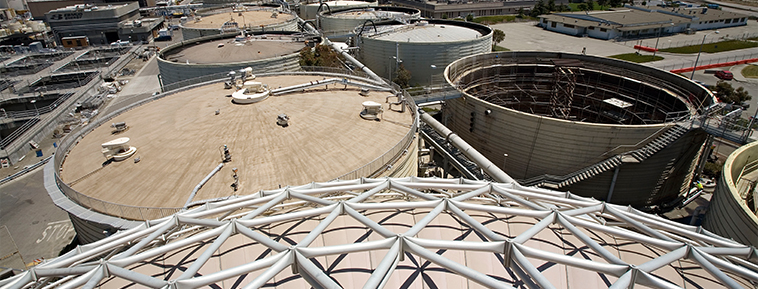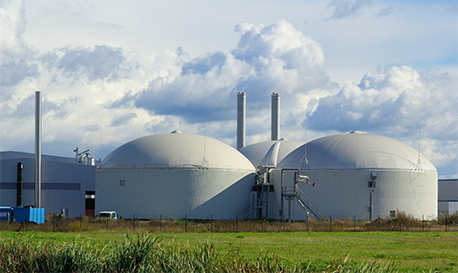Technology
The process, the concept, the future.

How An Anaerobic Digestion Plant Works
Regardless of where a biogas plant is operated, the basic principle is relatively simple. An anaerobic digestion (AD) plant is essentially a power station whose fuel is biological material such as energy crops or even food waste. Anaerobic digestion or AD plants use the natural process of fermentation on a large scale to produce a biogas which can be converted into electricity or a natural gas quality gas which can be exported into the national grid.
A constant feedstock of organic material such as maize silage, grass, sunflowers, sugar beet or food waste is fed into the digester and because these input materials all primarily consist of water, they liquefy during the biogas production process. After the input material has been completely broken down, an odourless liquid remains – the digestate: which is a high quality fertiliser. This creates an additional revenue stream for the operator as fertiliser is one of the biggest expenses for any farmer.
The biogas produced through this process can then be converted in two different ways. The first is to run it through a CHP (Combined Heat and Power) unit which turns the biogas into electricity and heat (in the form of steam). A proportion of this electricity and steam is then fed back to the digester system to power the plant components and keep the digester at the correct temperature to ensure optimum biogas production. The second option is to run the biogas through a gasification system, this device upgrades the gas to a natural gas quality bio-methane. This bio-methane can then be injected into the national gas grid network.
Energy Generation
There are three forms of energy that an AD plant can produce
Electricity
The electricity produced is a clean renewable energy and is exported to the national electricity grid in much the same way as the plethora of solar panel or wind farm installations. This form of energy generation has the potential to deliver in excess of 3,000MW of renewable electcity to the national grid in the UK.
Gas
The gas produced in the digestion tanks is more than 60% methane which is the key component of the gas which is injected into the gas grid network. Before injection the gas must be upgraded which involves the removal of contaminants such as hydrogen sulphide or siloxanes, as well as the carbon dioxide.
HGV Fuel
Following the upgrading process for gas grid injection the biomethane is compressed and liquified for use as an HGV fuel. This process is widespread in Scandinavia, in particular in Sweeden where over 38,600 gas vehicles exist, and 60% of the vehicle gas is biomethane generated in anaerobic digestion plants.
Commercial Benefits Of Anaerobic Digestion

Our AD sites are chosen from a logistical standpoint in order for a network of local producers to be matched to one plant, offering certainty, lower costs and carbon reduction

Source-segregating organic waste, and having it collected, saves on Landfill Tax, transportation costs and reduces methane and carbon dioxide emissions

AD enhances your organisation’s brand and green credentials

AD plant construction and operation provides local jobs and the creation of new technological skill-sets.
Environmental Benefits Of Anaerobic Digestion

Valuable nutrients are recycled back into the land through the production of digestate

Digestate may also be used as a feedstock for ethanol production and for low-grade building materials

AD provides ‘green’ jobs and contributes to growth in the ‘green’ economy

Governments are saving significant sums by turning to W2E, freeing much-needed resources to schools, hospitals and infrastructure

